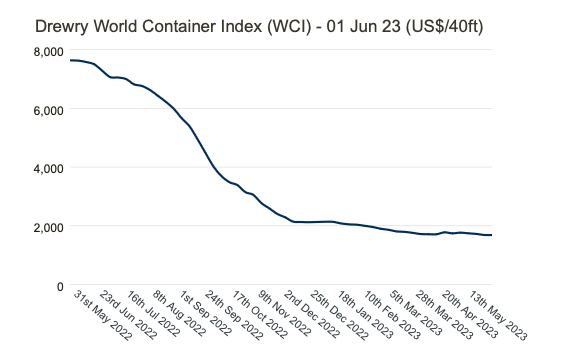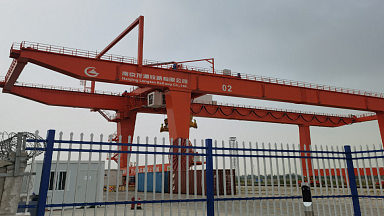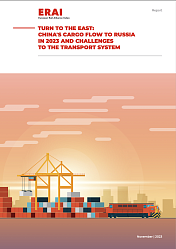Our detailed assessment for Thursday, 01 June 2023
- The composite index has decreased by 0.2% this week, and has dropped by 77.9% when compared with the same week last year.
- The latest Drewry WCI composite index of $1,682 per 40-foot container is now 84% below the peak of $10,377 reached in September 2021. It is 37% lower than the 10-year average of $2,688, indicating a return to more normal prices, but remains 18% higher than average 2019 (pre-pandemic) rates of $1,420.
-
The average composite index for the year-to-date is $1,851 per 40ft container, which is $837 lower than the 10-year average ($2,688 mentioned above).
-
The composite index decreased by 0.2% to $1,682.10 per 40ft container, and is 77.9% lower than the same week in 2022. Freight rates on Rotterdam — New York fell 6% or $255 to $3,714 per feu. Similarly, rates on New York — Rotterdam declined by 4% to reach at $813 per 40ft box. However, rates on Shanghai — New York increased by 3% or $73 to $2,833 per 40ft container. Rates on Rotterdam — Shanghai and Shanghai — Los Angeles dropped 1% to $579 and $1,782 per 40ft container, respectively. However, rates on Shanghai — Rotterdam inched up 1% to $1,543 per feu. Nevertheless, rates on Shanghai — Genoa and Los Angeles — Shanghai hovered around the previous week’s level. Drewry expects East-West spot rates to decrease further in the next few weeks.





